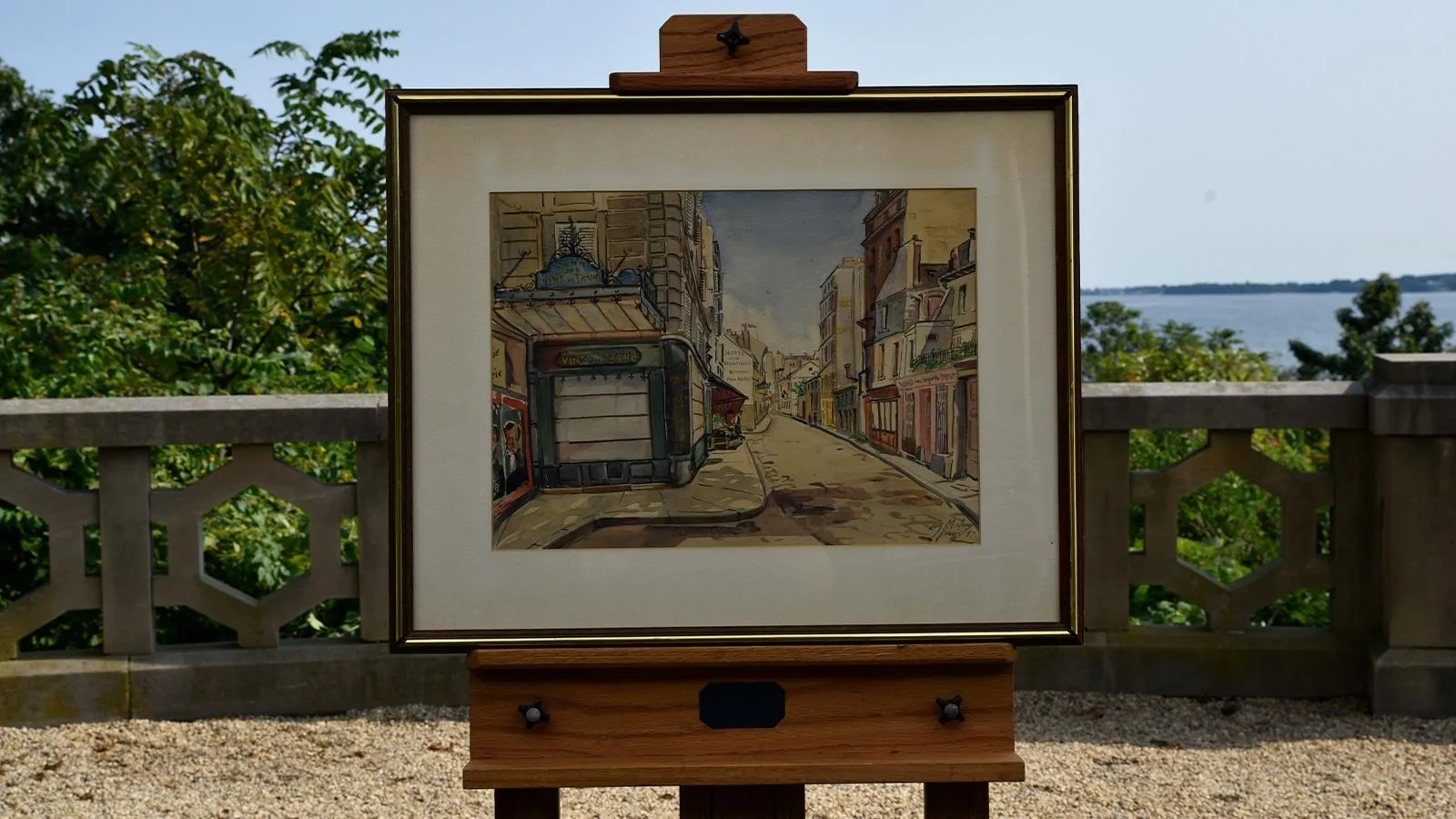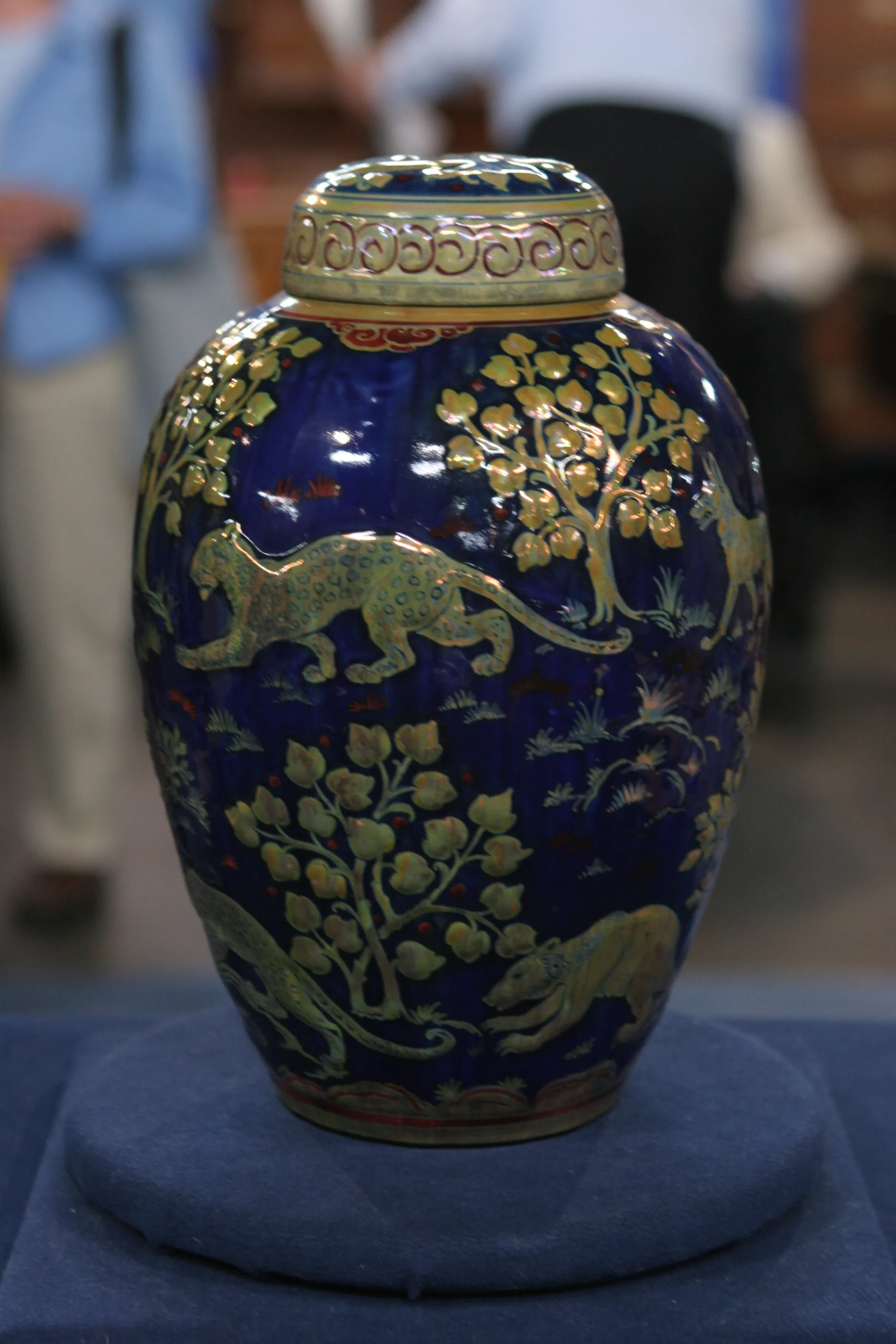1947 Loïs Mailou Jones "Quartier St. Hilaire" Watercolor
GUEST: My great-aunt Loïs gave this painting to my wife and I on the day of our wedding, and we've loved it ever since we had it. It's very evocative of Paris and the type of painting that Loïs loved to do. She was full of color.
APPRAISER: And so you are Loïs Jones's, the artist's, great-nephew, is that right?
GUEST: Great-nephew, correct, yes, yes.
APPRAISER: Yes. And the, the wedding took place, as I understand it, uh, was 1977, is that...
GUEST: 1977, yeah.
APPRAISER: The title of this lovely watercolor is "Quartier Saint-Hilaire," and it's a Paris scene.
GUEST: Mm-hmm.
APPRAISER: And it's signed Loïs M. Jones, and it says Paris, and it says '47, so it was done in 1947.
GUEST: Correct.
APPRAISER: So you got it almost exactly 30 years after she created it.
GUEST: Correct.
APPRAISER: And I should also point out it's inscribed very nicely on the back.
GUEST: Yes, it is.
APPRAISER: And she's telling you that it's a wedding present to you and your wife, which is fantastic.
GUEST: Right, right.
APPRAISER: But what's also interesting is, on the back, she's even put the value at $1,500.
GUEST: (chuckles): Yes, in 1947.
APPRAISER: Well, I'm assuming it was put there in, in 1977, when she gave it to you.
GUEST: Oh, it could be, yup, yup, yup.
APPRAISER: So yeah, obviously, that's not a current value.
GUEST: Right.
APPRAISER: But it's just interesting as a, kind of a point of reference.
GUEST: Absolutely.
APPRAISER: So, I'm probably gonna tell you what you already know. But Loïs Jones was born in 1905, and one of the amazing things about that for me is that that's just 40 years after the end of the Civil War...
GUEST: Mm-hmm.
APPRAISER: ...and the passage of the 13th Amendment abolishing slavery.
GUEST: Correct.
APPRAISER: And, you know, here she was in her, probably late 50s, early 60s, the Voting Rights Act was passed.
GUEST: Mm-hmm.
APPRAISER: And the Civil Rights Act was passed and so forth.
GUEST: Correct.
APPRAISER: So I only bring that up because, for two reasons: one is... She spoke about, often, that she had to submit her paintings anonymously.
GUEST: Correct.
APPRAISER: Because of the racial barrier. Did she ever talk to you about stuff like that?
GUEST: Yeah, she, she talked about that time, and, and the "situation," that's what she called it. Um, oftentimes in Boston, she had to have a white friend submit the painting, and she would go to the exhibit to see people talking about her painting, not knowing that she had done it. And, um, get high accolades and, and, you know, praise for her painting, but never could show her face. And that, that didn't stop her-- she had that kind of spirit. "I want to be an artist of consequence." And being a female, and an African American female, in those days was, was tough. She started out doing the design on the textiles for a department store in Boston...
APPRAISER: Right.
GUEST: ...where she was born, and she saw the textiles being exhibited, but it didn't have her name. She said, "Well, this is the last time I'm going to do a painting, and it doesn't have my name prominently on the painting." So that's why she would always sign very big, let people know, "This is me."
APPRAISER: Sure. Oh, and the second reason I bring it up is because Paris, as I understand it, 1937 was the first time she went there.
GUEST: Correct.
APPRAISER: But she just raved about the experience of being somewhere where race wasn't an issue.
GUEST: Very important to her. It gave her the freedom to be who she was. Like many African American artists who had to go to Paris to really have the atmosphere, and to be able to paint, or create, or do music, or write. So she met a lot of artists over there, white and Black-- Picasso, Langston Hughes, Josephine Baker.
APPRAISER: Did she ever speak to you about that?
GUEST: Well, she, she mentioned it, I mean, I, you know, when she talked about it, I was ten, you know, nine or ten years old.
APPRAISER: Right.
GUEST: And I was just a kid, so the names passed through, but I didn't really know who they were until I became older and realized the scope of her achievements.
APPRAISER: Yes, some scholars actually point to that point in time that kind of transitioned her as an artist.
GUEST: Correct.
APPRAISER: Her painting style changed, and this was a...
GUEST: Correct.
APPRAISER: ...big, pivotal point in her career, in Paris.
GUEST: Absolutely.
APPRAISER: And we should also point out she was one of the early art instructors at Howard University, the historically Black college...
GUEST: Ab... That's correct, that's correct.
APPRAISER: ...in Washington, D.C. Has a distinguished career as an educator, as well.
GUEST: Mm-hmm.
APPRAISER: So have you had this, uh, painting appraised? Do you have any sense of how much it's worth?
GUEST: No, no, it's, it was a gift. We're not going to, you know, sell it.
APPRAISER: Of course.
GUEST: This is insurable value, mostly.
APPRAISER: Oh, sure. Of course, of course.
GUEST: Yeah, yeah.
APPRAISER: It's very impressive, her use of color, and her sense of design and composition. I would say this painting is probably worth around $25,000 retail, so I would insure it for that amount, if I were you.
GUEST: Okay, good, good.
APPRAISER: Yeah, I think that she thought enough of it to select it as a wedding present for you, I think, is really kind of a nice, uh, additional point to it, so...
GUEST: Thank you.
APPRAISER: That's where I would, that's where I would place it.
GUEST: Thank you. Loïs would be pleased.
APPRAISER: Oh, excellent, excellent. (both chuckle)

$25,000 Retail
Photos


Featured In

episode
Sands Point Preserve, Hour 2
See spectacular finds at Sands Point Preserve, like a $120,000 treasure!
Fine Art
Understanding Our Appraisals
Placeholder









